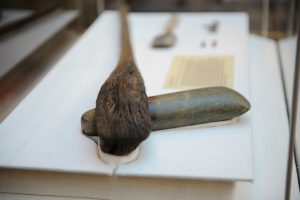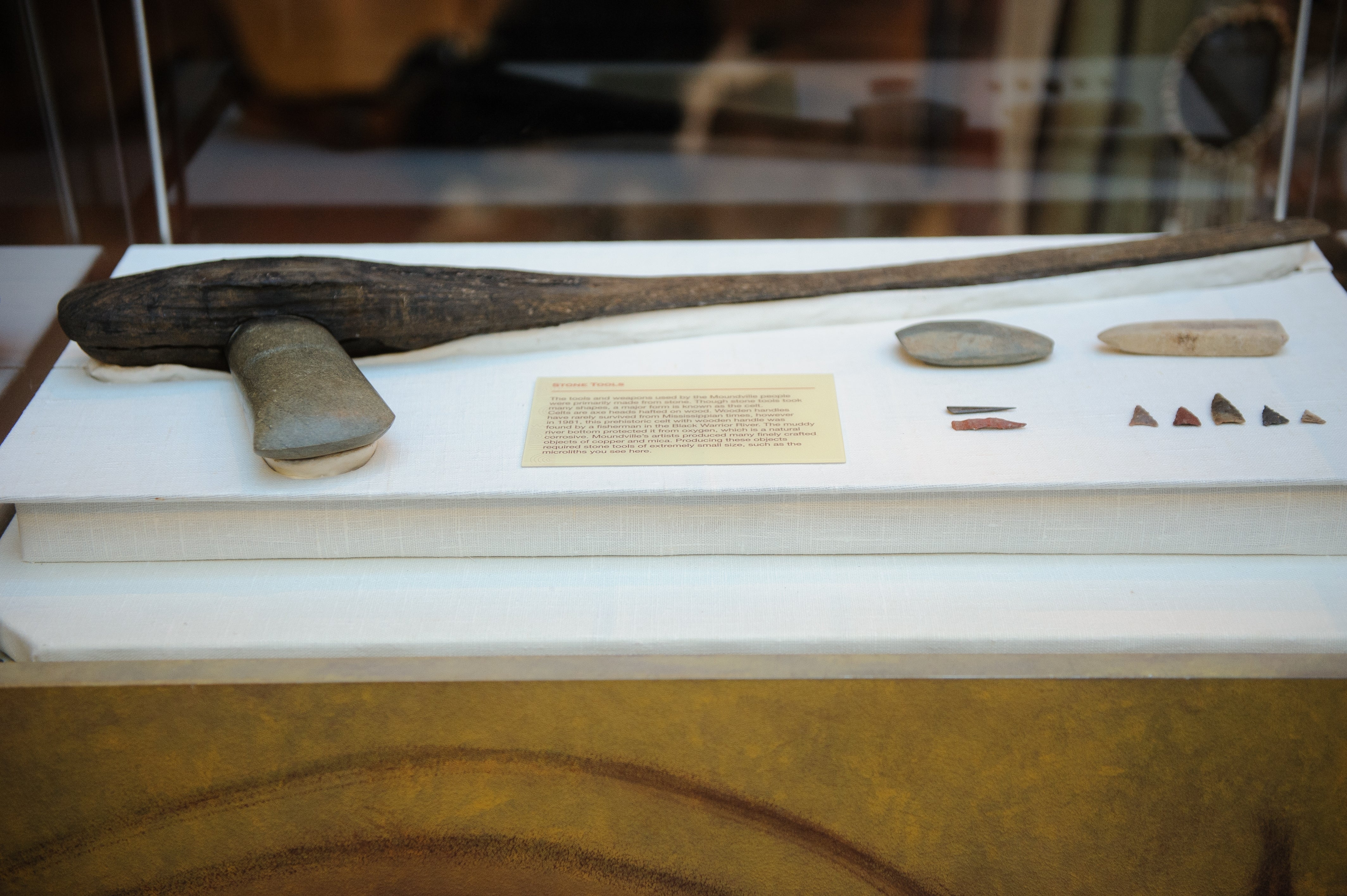
One of the unique artifacts on display at the Jones Museum of Archaeology in Moundville is a Mississippian stone axe, or celt, complete with wooden handle. The artifact was pulled from the Black Warrior River by two fishermen, Carl and Timmy Greene, who snagged it on a catfish trotline in April 1981.
The head of the axe is formed from Hillabee chlorite schist (commonly called greenstone), a stone which is found in the Piedmont area of Alabama and Georgia. The handle is carved of white oak, one of the most durable and tough species, which was shown when archaeologists at the Office of Archaeological Research attempted to remove a sample from the handle for carbon dating: the wood was so hard that it bent the brass core sampler used during one attempt, and broke an Exacto knife during another.
Given the climate and weather conditions of Alabama and the surrounding states, wooden artifacts such as this are rare in Southeastern archaeology; submersion in water can inhibit attacks by wood-eating insects and microorganisms, slowing the process of decay, but adds to the difficulty in discovering, recovering and preserving such artifacts. Archaeologists preserved the piece by soaking it in a chemical bath to replace the water in the wood with polyethylene glycol, a process which took nine years to complete before the axe was ready to display.
The Archaeological Collection holds more than 1 million artifacts, associated documents and photographic images documenting the history of human occupation in the southeastern United States and beyond. Artifacts from Moundville Archaeological Park, the site of one of the largest prehistoric Native American settlements in North America, form a major part of the collection. The collection is housed at the Erskine Ramsay Archaeological Repository, and supports collection–based research both at home and abroad by students, academics and professionals.
WIlliam R. Allen, archaeology collections manager for The University of Alabama Museums, provided the above information.
